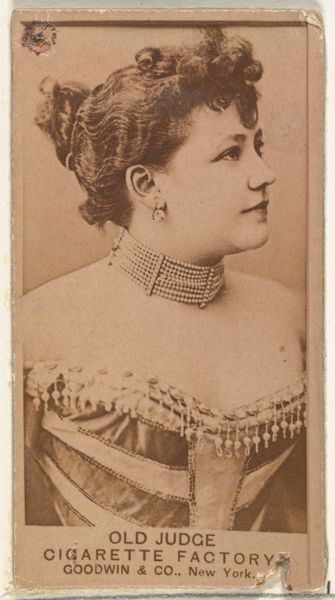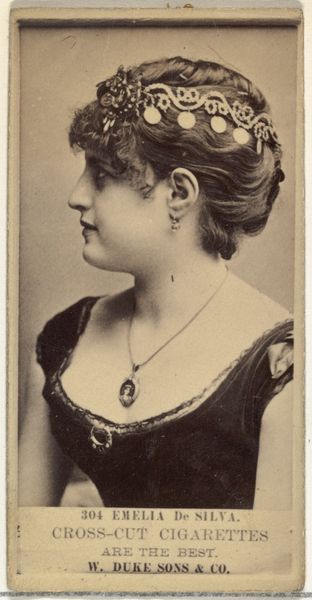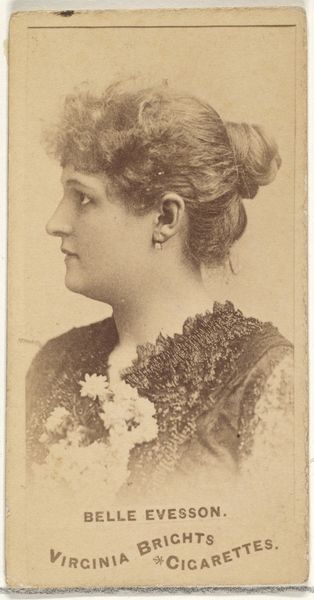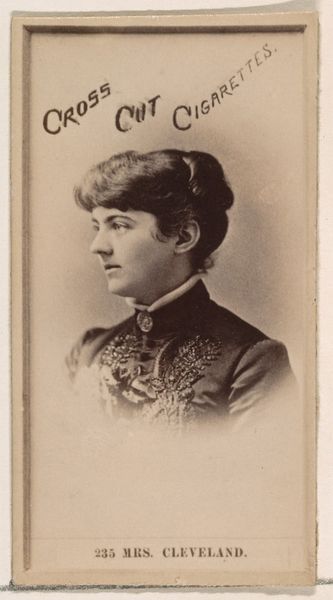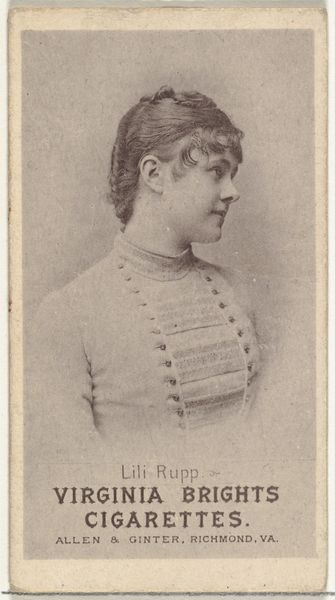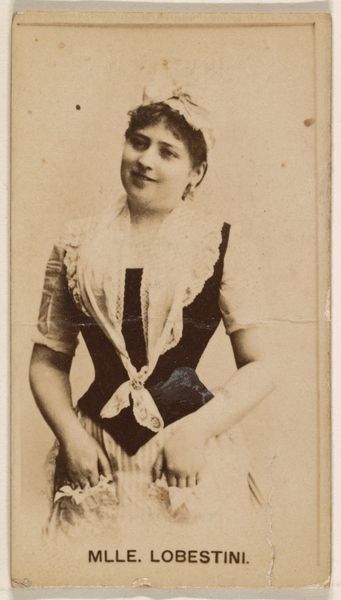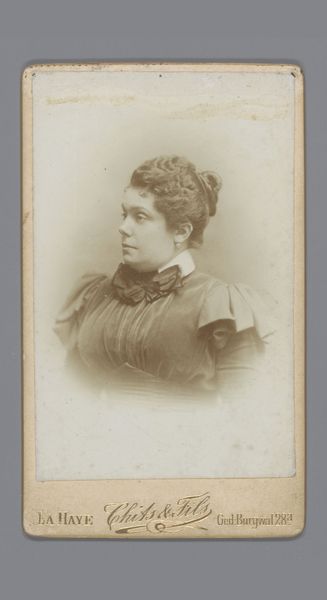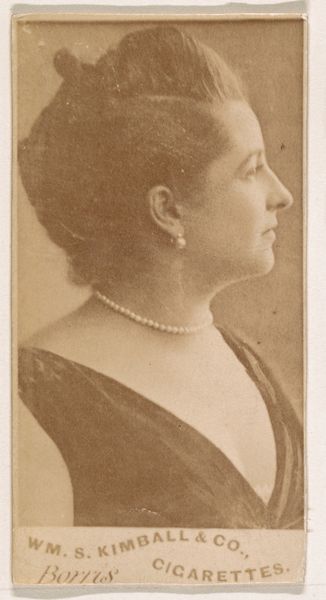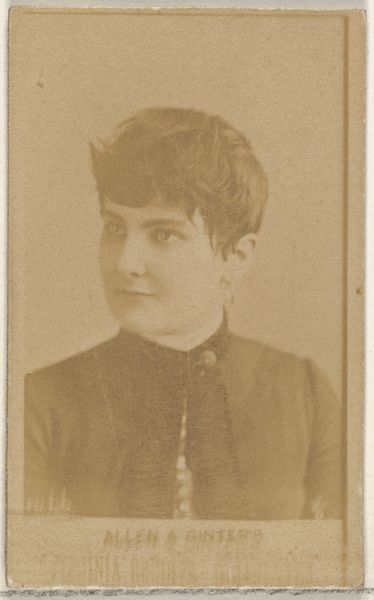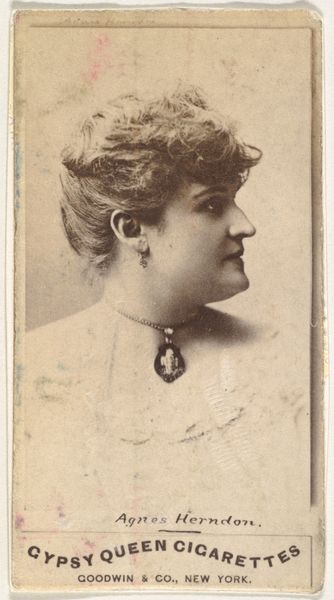
Bertha Foster, from the Actors and Actresses series (N45, Type 1) for Virginia Brights Cigarettes 1885 - 1891
0:00
0:00
drawing, print, photography
#
portrait
#
drawing
# print
#
impressionism
#
photography
#
19th century
Dimensions: Sheet: 2 3/4 x 1 3/8 in. (7 x 3.5 cm)
Copyright: Public Domain
Editor: So, this is "Bertha Foster, from the Actors and Actresses series (N45, Type 1) for Virginia Brights Cigarettes," dating back to sometime between 1885 and 1891. It's fascinating how the print medium becomes a vessel for both art and advertisement. What can you tell me about this portrait from a different perspective? Curator: Well, what jumps out at me is not just *who* is depicted, but *how* and *why* this image was mass-produced. Cigarette cards like these blurred the lines between fine art, commercial enterprise, and celebrity culture. Let's consider the materiality. The cheap paper stock, the reproductive printing process – these weren’t meant for a museum. They were designed for mass consumption, included with Virginia Brights cigarettes as a way to promote their brand. The artistry is thus fully in service of profit. Editor: That makes perfect sense. It seems contradictory. You've got a photographic portrait – a technique gaining artistic legitimacy at the time – being used as a disposable marketing tool. Curator: Exactly. This wasn't about high art ideals; it was about accessing a wider audience. The subject, Bertha Foster, becomes a commodity herself. Her image, replicated and distributed with packs of cigarettes, feeds into a burgeoning culture of celebrity and consumerism. Who controlled the image? What were the working conditions for the printmakers reproducing thousands of these cards? Editor: Those are questions I hadn't even considered. So, rather than seeing this simply as a portrait, we should consider the entire manufacturing process, the socio-economic forces at play. Curator: Precisely. By examining the means of production, the circulation of the image, and its function within a commercial enterprise, we gain a much deeper understanding of this piece and its historical context. It’s not just a pretty picture; it’s a cultural artifact reflecting the complexities of late 19th-century capitalism. Editor: That’s a great reminder to consider the entire system around a piece, and not just the image itself. Thanks!
Comments
No comments
Be the first to comment and join the conversation on the ultimate creative platform.
